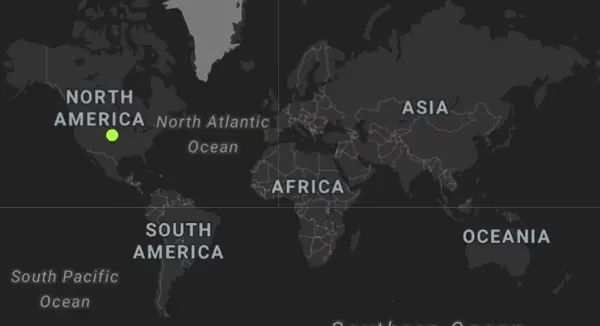usage: run [-h|--help] -l|--log_file "<value>" -g|--geodb_file "<value>"
[-p|--port "<value>"] [-s|--blip_size <float>] [-b|--blip_life_time
<integer>] [-d|--dark]
run the geolog websocket server
Arguments:
-h --help Print help information
-l --log_file log file to tail
-g --geodb_file geolite db to use
-p --port port to listen on. Default: 8080
-s --blip_size Maximum size of the blip relative to the map width. Default: 0.3
-b --blip_life_time life time of the map blips (Milliseconds). Default: 2000
-d --dark dark modeImportant
Geolog needs a local *.mmdb Maxmind database to lookup the geo location.
You can get a free licence to download their geoip databases at: https://dev.maxmind.com/geoip.
Geolog creates a http server from which the map is served, updates happen over websockets.
Websockets get automatically reconnected.
go run github.com/vindolin/geolog \
-l /var/log/nginx/access.log \
-g /opt/GeoLite2-City.mmdb \
-dgo run . \
-l /var/log/nginx/access.log \
-g /opt/GeoLite2-City.mmdb \
-p 8080docker build -t vindolin/geolog \
--build-arg ACCOUNT_ID={YOUR_ACCOUNT_ID} \
--build-arg LICENSE_KEY={YOUR_ICENSE_KEY} \
.docker run -it --rm --name geolog \
-v /var/log/nginx:/var/log/nginx:ro \
-p 8080:80 \
vindolin/geolog \
-l /var/log/nginx/access.logdocker run -it --rm --name geolog \
-v /var/log/nginx:/var/log/nginx:ro \
-p 8080:80 \
vindolin/geolog \
-l /var/log/nginx/access.log \
-d

